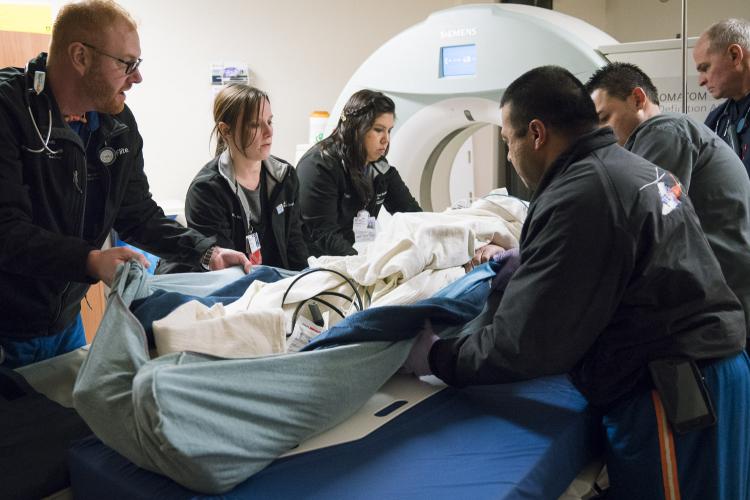
Strokes are the number one cause of debilitating injuries in the United States each year. But JPS Health Network Stroke Coordinator Lauri Speirs said it doesn’t have to be that way.
Getting the best care – and getting it quickly – is vital to prevent or limit brain injury. JPS Health Network offers the highest quality care available, certified by the State of Texas as a Comprehensive Level I Stroke Center.
“Some people say time is money,” Speirs said. “But we say that time is brain cells. For every minute a person who is having a stroke goes without treatment, about 1.9 million brain cells die. There is a lot we can do to help people who are having a stroke -- if they can get to us quickly.”
Ischemic strokes — those caused by a blood clot in the brain — account for about 85 percent of stroke cases. When they strike, a clot-busting drug called tissue plasminogen activator (tPA) can prevent or limit permanent brain injury, but it must be given intravenously within the first 4.5 hours after symptoms appear. After that, it’s likely too much damage has been done to expect a full recovery.
It’s tragic when healthcare workers have to tell stroke victims they missed their chance to get better, Speirs said.
“We hear a lot of reasons why people didn’t come in sooner,” Speirs said. “They wanted to wait to see if they felt better, they thought they were too young to have a stroke, they’re a healthy person, so it must be something else. Waiting is the worst thing you can do. Strokes don’t care about your age, your race, your religion or how much money you have.”
Another common factor that throws off people suffering a stroke is that they don’t have a headache. While it seems logical that a headache would accompany a brain injury, most types of strokes are possible without head pain. Balance issues, blurred or double vision, drooping of the face especially in the corners of the mouth, lack of ability to lift one or both arms and slurred speech are better indicators. Any combination of these symptoms signals that the person suffering from them needs immediate medical attention.
While strokes are indiscriminate in who they strike, that doesn’t mean something can’t be done to decrease the chance of having one. According to the American Heart Association, about 90 percent of strokes are preventable.
How can I prevent a stroke?
- Monitor and maintain your blood pressure. It should be lower than 120/80 so get it checked – and if you’re prescribed blood pressure medicine, take it as directed by your physician.
- Exercise regularly. Take a walk, ride a bike, join a fitness club. The choice about what you do is yours. But moderate exercise for 30 minutes a day, five days a week can greatly reduce your chance of a stroke.
- Eat healthier by reducing salt, high cholesterol foods and alcohol.
- Don’t smoke.
More than 70 percent of people who endure a stroke don’t make it to care within the vital 4.5 hour period when the biggest difference can be made.
“The window to treat strokes has gotten bigger over the past few years,” Speirs said. “But minutes still matter. The sooner we see you, the better your outcome is going to be.”
JPS was certified in 2016 as a Comprehensive Level I Stroke Center. It was praised by surveyors at the time as the “best prepared” new Level I program they had ever inspected. JPS is up for renewal of the certification in 2019.
